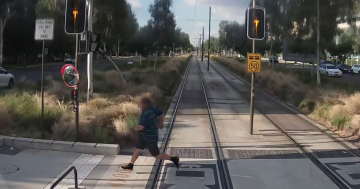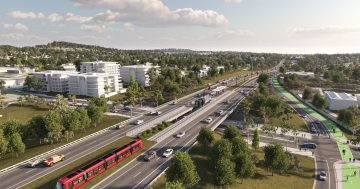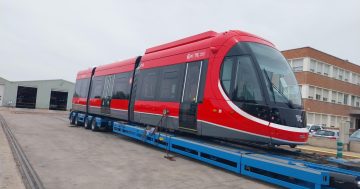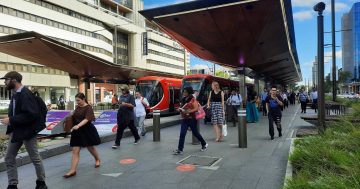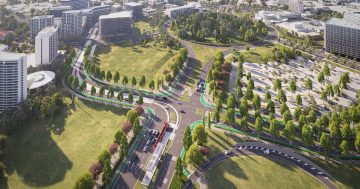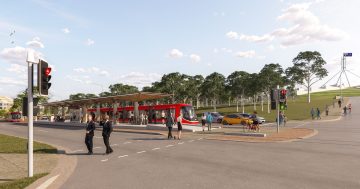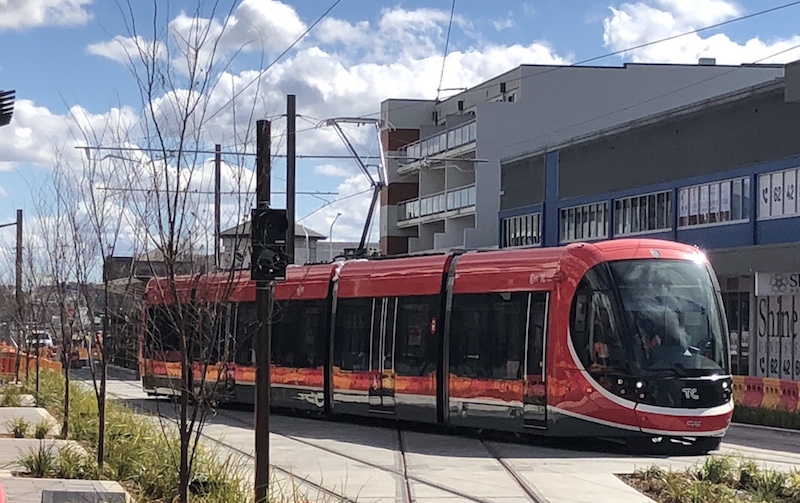
The Capital Metro project is already having a positive impact on property prices in North Canberra. Photo: Supplied.
Proximity to transport infrastructure is one of the most powerful economic drivers in property values. But exactly how much value the ACT Government’s Capital Metro project brings to your property remains to be seen.
Close to the exciting development which is to launch its inaugural service early next year, McGrath Belconnen/Gungahlin says the uplift has been clearly evident since the announcement in 2014.
Principal Craig Chapman says historically, light rail is seen to have a positive effect on property values and the Capital Metro line from Gungahlin Town Centre to the City is expected to do just that.
“I would say the project has proved well in saleability compared to property not on the railway line, more so than a marked dollar increase in values, especially as we are in a fluctuating market at the moment,” Mr Chapman says. “I have no doubt values will rise in the future and above property not along the route.”
Mr Chapman says analysis in Australia and overseas has shown the area between 100 and 400m from a tram stop is ‘the sweet spot’ where property popularity and values are likely to rise the most.
“In Canberra, a plethora of lifestyle and entertainment options will follow. We can look forward to restaurants, cafes, shared outdoor spaces, and better connecting arterial access from neighbouring suburbs,’’ he says. “Favourability to live within 100 – 400 metres of the light rail will grow as our City does. As its popularity climbs, prices will follow,” Mr Chapman says.
This concept has paved the way for transit-oriented development, which increases both density along light rail corridors and patronage, improving the cost-benefit of the system.
“This is very evident with recent land releases and subsequent residential and commercial precincts popping up along Northbourne Avenue,” Mr Chapman says.
Harrison, Franklin, Watson and Downer have experienced a spike in their median home values.
Year-on-year median sales prices in Harrison have surged 10.21 per cent to $737,000, in Franklin 2.89 per cent to $731,000 and in Watson 6.62 per cent to $766,000.
“Harrison is the star performer,” Mr Chapman says.
“Strong sales along Northbourne Avenue include HTI Group’s Midtown and Mantra project, apartment sales in Art Homes projects On Forbes, Mulberry and So Ho, Embark, DK-SN in Dickson and closer to Braddon with Geocon’s Midnight development,” he says.
“I also anticipate strong results from luxury townhome offerings in Watson, Downer, Hackett, Lyneham, Turner and O’Connor, especially those branching off from McArthur Avenue,” he says.
“Renters might especially look for homes close to light rail stops, and this should be top of mind for investors.”
Mr Chapman says areas previously unattractive to buyers because of distance, in terms of travel times to key destinations like the CBD, shopping, entertainment and dining precincts and sporting facilities of the Inner North, will be revolutionised by the new light rail, providing ease of access.
Light rail has shown its value around the world as a complimentary transport solution to urban development and has encouraged the concept of communities where people live, work and play.
“It is worth noting in the ACT the north side routes are now fixed and, unlike bus route changes or draft planning of more light rail elsewhere in Canberra, will remain fixed,” Mr Chapman says. “Of course there is nothing preventing the operators in future to potentially add more tram stops to these routes,” Mr Chapman says.
“As older Canberrans look to downsize they will gravitate toward property dotted along the rail in these inner northern areas,” he says.
Mr Chapman believes testing of the new infrastructure will continue adding to the excitement. As it becomes a reality, awareness of what it could mean for property and lifestyle value will also increase.
While commuters are the obvious beneficiaries, tram patrons from all demographics will gain. “Students will access the City route to attend ANU, the line also passes Exhibition Park with its many festivals shows and markets. It passes sporting facilities in Lyneham and the satellite business and entertainment district of Dickson,” Mr Chapman says. “Pensioners will have a more convenient option of accessing inner-city services.”












